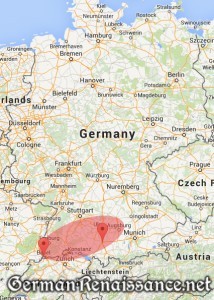 My personal German costuming wardrobe is fashioned after those styles from what is now the Southwest Germany area, specifically the region of Swabia and the city of Basel (which is right on the German border in the Swiss Conferation). I’ve indicated these locations on the map to the right, which is a roughly 200 mile area. I prefer the first half of the 16th century, mainly between 1510-1515 (pre-reformation), but my Landsknect outfits date to 1535. I enjoy making Patrician (upper class) and Burgher (middle class) gowns, but I only wear them on the few occasions I am without my young son in tow because these dresses are made of finer materials and are generally more movement restricting—women in these classes were affluent and had servants to attend them. When I am with my entire family, I prefer to wear my Landsknect dresses, as they tend to allow me to be more physically active. Landsknect dress styles are more difficult to pinpoint to a specific place, as the units traveled extensively among the German City-States, Switzerland, and beyond. That said, the Landsknect dress styles I choose are still quite indicative of the South Germany area.
My personal German costuming wardrobe is fashioned after those styles from what is now the Southwest Germany area, specifically the region of Swabia and the city of Basel (which is right on the German border in the Swiss Conferation). I’ve indicated these locations on the map to the right, which is a roughly 200 mile area. I prefer the first half of the 16th century, mainly between 1510-1515 (pre-reformation), but my Landsknect outfits date to 1535. I enjoy making Patrician (upper class) and Burgher (middle class) gowns, but I only wear them on the few occasions I am without my young son in tow because these dresses are made of finer materials and are generally more movement restricting—women in these classes were affluent and had servants to attend them. When I am with my entire family, I prefer to wear my Landsknect dresses, as they tend to allow me to be more physically active. Landsknect dress styles are more difficult to pinpoint to a specific place, as the units traveled extensively among the German City-States, Switzerland, and beyond. That said, the Landsknect dress styles I choose are still quite indicative of the South Germany area.
1516 Basel Burgomaster’s Wife (Mayor’s Wife)
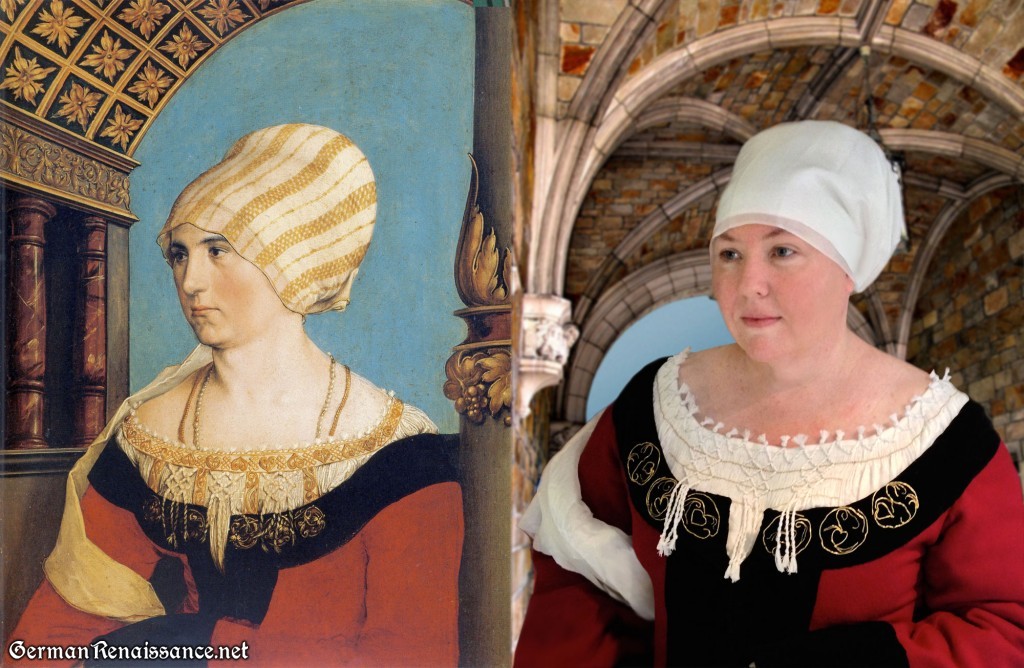
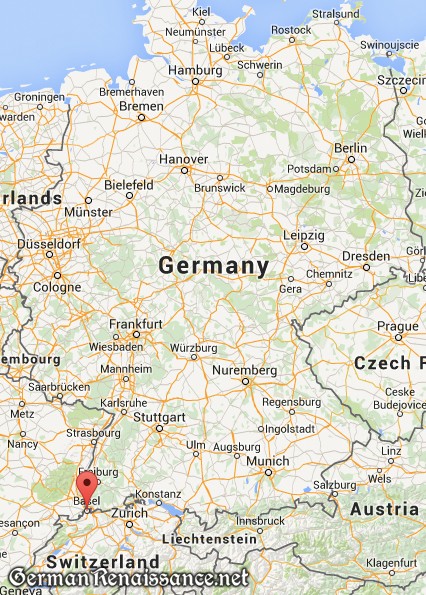
Image: Dorothea Meyer by Hans Holbein (1516), Kunstmuseum, Öffentliche Kunstsammlung, Basel
Note: This gown style also appears four years earlier in Augsberg in a Portrait of a Man and His Wife (1511) by Ulrich Apt the Elder, Metropolitan Museum of Art, as well as in several others places in the region.
Documentation: Red Gown with Velvet Guards and Pleated Hemd with Silk Cords
1515 Swabian Burgher Class Woman in a Dekollete Gown
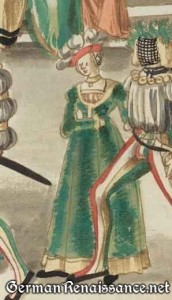
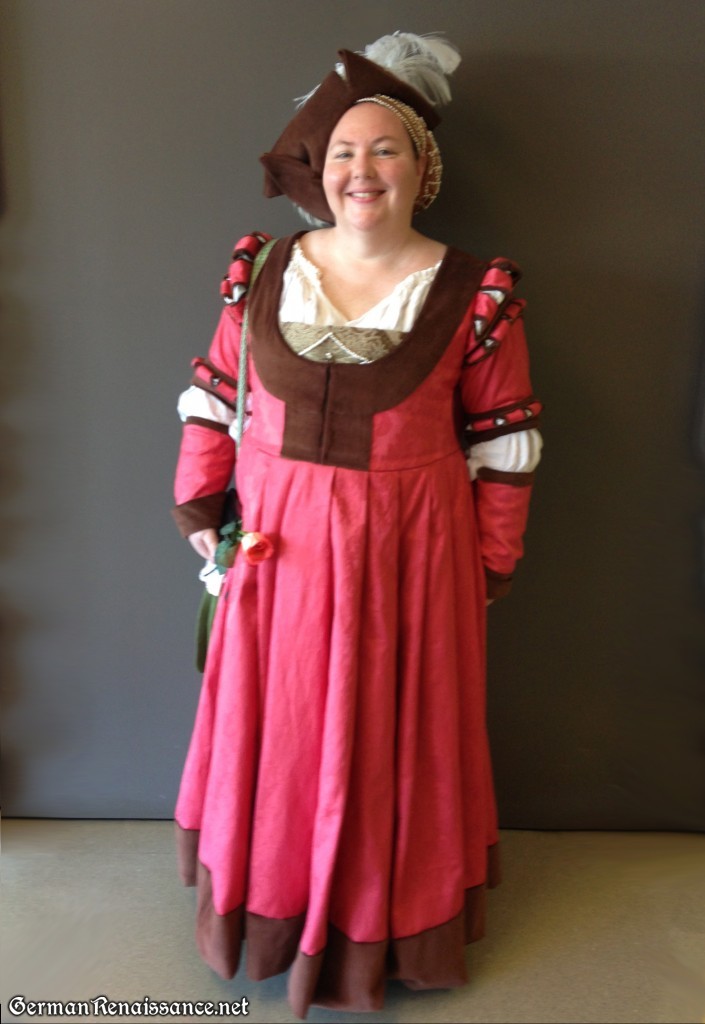
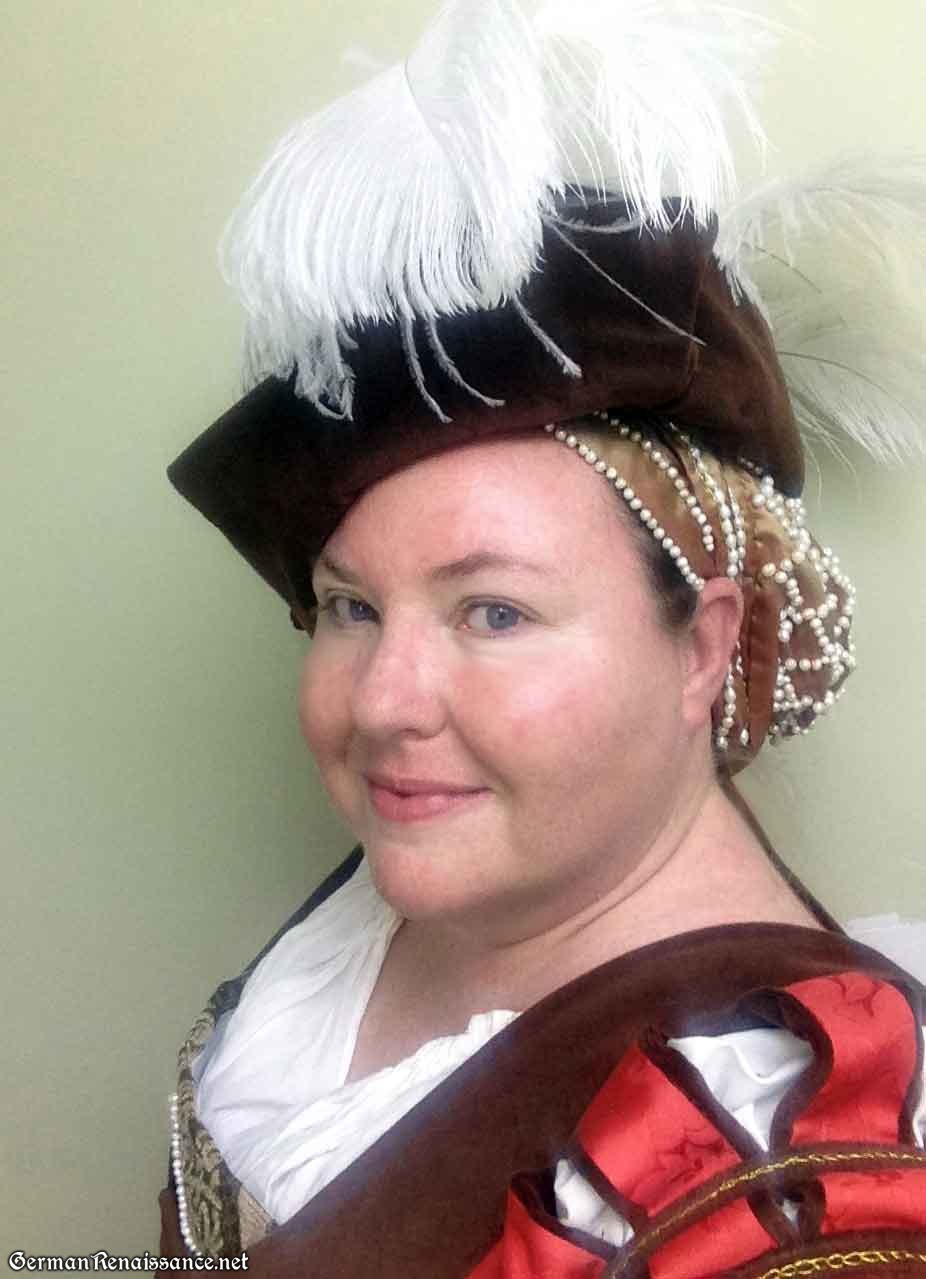

Image: Detail from Masquerade (1515), National Gallery of Art
Note: The Dekollete dress style also appears in A dance in Augsberg (1510) as well as 100 miles to the southwest in Basel, based on this image from 1506 by Rector Werner Schlierbach, Universitätsbibliothek, AN II 3: Matriculation Register of the Rectorate of the University of Basel, Volume 1 (1460-1567), as well as in other areas in Swabia, including Stuttgart
Documentation: Pink and Brown 1515 Swabian Dekollete Gown and Goldhaube (note that while the Augsberg sumptuary laws of 1530 allowed wives in this class to have silk dresses, they forbid the wearing of pearls — but this dress predates those laws by 15 years and pearled goldhaube were worn in Augsberg during this period and for at least 10 more years, based on imagery).
1535 Landsknect Musketeer’s Wife
(based on clothing styles, most likely from the Southwestern Germany or Northern Swiss area)
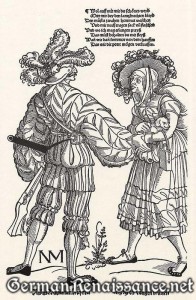
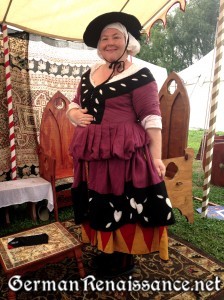
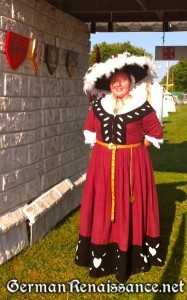
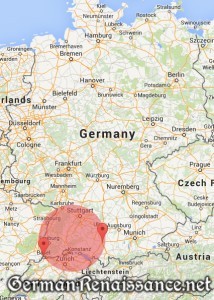
Image: Musketeer and Wife by Erhard Schön (1535)
1530 Landsknect Wife
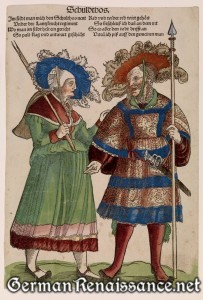
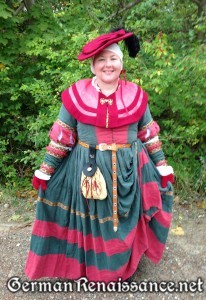

Image: Schuldthos by Niklas Stoer (1535-1530)
What’s Next?
I am continuing to research the Southwest German area deeper. I have found a few images of a dekollete dresses without set-in sleeves; rather there are smaller sleeves (tubes) around the biceps and forearms being held in place with simple panes of fabric or strings. I don’t see this dekolette style nor the tube sleeve style replicated very often, and thus I feel it deserves further study. The images below are from 1515-1535, primarily Augsberg. As you can see, this style spans several classes, from working class to burgher class.
In the photo below from Tyrol (just south of Swabia) in about 1507-1508, the lady on the far right wears a very similar style of dress to some of the ladies above: dekollete gown (but missing the vertical guards) and strung-on sleeves.
Sources
I rely heavily on imagery from the southwest German area for it tends to give a more complete picture of the dress worn at the time, but I do look for textual and extant primary sources as well. Important artists include Albrect Dürer (who traveled extensively in the Swabian region in the formative years of his career and painted a number of portraits in Augsberg later as well), Hans Holbein the Younger (born in Augsberg and frequent visitor to Basel as a young artist), Jörg Breu (c. 1475–1537), Hans Burgkmair (1473–c. 1531), and Leonhard Beck (c. 1480–1542). Sumptuary laws exist for Augsberg, but they are dated to 1530, over a decade after my particular interests — still, they can provide some insight into the sorts of behaviors and usages that may have been in play earlier.
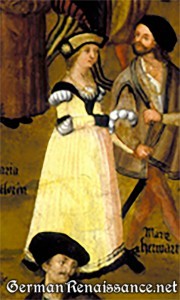
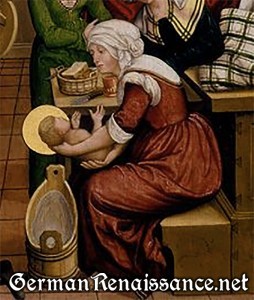
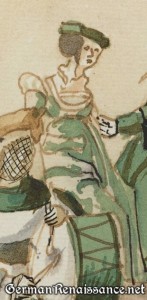
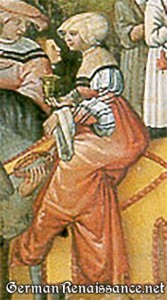
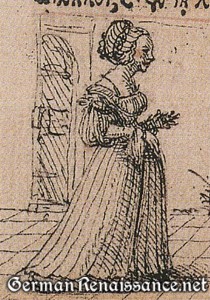
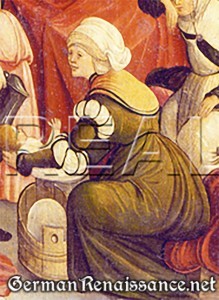


Wonderful website. I have cited your article on steuchlein for a project. Probably not entirely correct for a Berliner… but there seems to be a lot less art resource for north east Germany.
I have roots in Swabia and your Site gives valuable information. My ancestors lived in the Area from 1200-1400 and ended up in Finland for some reason.